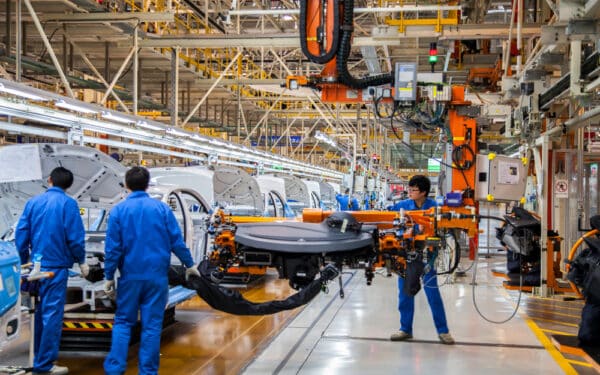Life has largely normalised since the pandemic. Far from proving permanent, many of the changes caused by the pandemic have proved transient. Air travel has lost none of its allure, with flight volumes bouncing back strongly. The boom in online retail sales has gone into reverse. In the UK car travel has returned to levels seen before the pandemic.
In one area the change has been significant and, two years on from the end of lockdowns in England, it looks increasingly permanent. In the UK hybrid working is running at roughly three times the levels seen before the pandemic, with about 40% of adults working partly or wholly from home. There are few signs in the data of fatigue setting in with hybrid working. The proportion of people working fully or partly from home has been broadly constant over the last year.
This represents a major, very rapid change in the organisation of work. There has been nothing like it since the demobilisation of the armed forces and the dismantling of the wartime economy after the second world war.
Enormous though this shift is, we need to see it in perspective. For most people work remains unchanged. In the US roughly 60% of jobs – everything from driving a bus to building and nursing – are site specific. Working from home is concentrated among higher-skilled, higher-paid jobs, particularly in technology, finance and business and professional services.
Nor can we simply extrapolate to the rest of the world from the experience of the US or UK. Along with Canada, Australia and the Netherlands these countries have high levels of hybrid working (one survey showed university-educated workers in these countries working an average of about 2.5 days per week from home after the end of lockdowns, in late 2001 and early 2022). Rates of home working are lower in most European countries and lower still in China, India and Japan.
In general employees seem to be keener on working from home than employers are. A large-scale survey run by Professor Nick Bloom at Stanford University has found that US employees would like to work an average of 2.75 days per week at home while employers would prefer their staff to spend half a day less, so 2.25 days, working from home.
In the last two years low unemployment and competition for staff have tilted the balance of power towards employees, obliging some employers to offer home working to attract and retain staff. A weaker labour market would doubtless cause some employers to revisit their policies on hybrid working. We cannot be sure that current levels of home working represent a new equilibrium until they have been tested through an economic cycle and a period of elevated unemployment.
Professor Bloom has found that hybrid working raises employee happiness and that, for the US, the ability to work from home 2 to 3 days a week is equivalent to an 8.0% pay increase. A randomised control trial of 1,600 staff in the US in 2021-22 found that hybrid working reduced quit rates, or resignations, by 35%.
Hybrid working seems to work for employees, but what about employers?
Here Professor Bloom concludes that fully remote tends to reduce productivity, but also brings compensating cost reductions. Organised hybrid work, for perhaps 2 to 3 days a week, tends to raise productivity slightly, by 1.0 percentage points to 3.0%. Productivity gains came from the ability to focus and concentrate and from reduced commuting time, roughly 40% of which according to Professor Bloom’s research, goes into working longer hours. However, such gains in productivity only occur when hybrid working is well managed.
Getting the most out of hybrid working takes time, planning and effort. It involves the coordination of days in the office for in-person meetings, events, training and social events. ‘Anchor’ days need to be treated like days in the office before the pandemic, with attendance mandatory. Offices should promote collaboration, with cubicles making way for meeting spaces, but this needs to be handled carefully. Coming into the office only to find oneself exposed to neighbours’ conference calls is not a happy experience and offices also need quiet areas. Performance management tends to be more difficult in a hybrid environment. Informal, face-to-face interactions are reduced and input-based evaluations, based on observed hours and activities, happen less. That makes output-based evaluation, drawing on data and discussion, more important. For relatively new joiners Professor Bloom recommends an extra day in the office for mentoring and to build networks.
All of this requires management commitment and time. Some aspects can be particularly tricky. Businesses report difficulties in encouraging people back into the office. People appear especially reluctant to return on Mondays and Fridays when offices are often at their quietest.
Hybrid working is here to stay, but it is, nonetheless, a still developing experiment in the organisation of work. How work happens will evolve over time and with the economic cycle. The prize is enormous. We now know that, done well, hybrid working can make workers happier and businesses more productive.
Write to us with your comments to be considered for publication at letters@reaction.life




